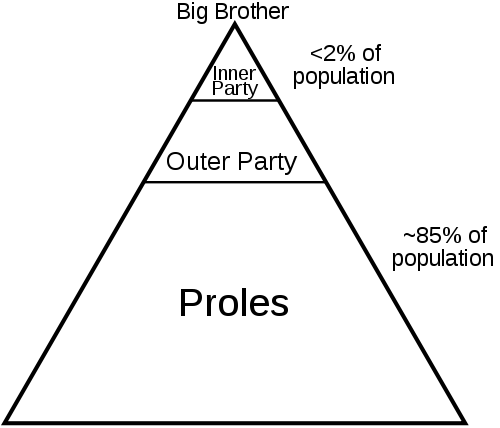You can tell a lot about a city from its county newspaper. Of course, I am unnaturally interested in regional newspapers because there weren’t any in Singapore where I grew up. I was stunned by the provincialism of the Western Australian, amused by the graphic focus of USA Today, temporarily seduced by the cosmopolitanism and urbane tone of the New York Times, and now I’m in St Louis I flapped open the NorthSider, a free mag (and apparently in its first issue) that was lying on my friend Darell’s breakfast table.
Here are some of July’s Headlines –
REBUILDING BLOCK BY BLOCK
A NEW TOOL FOR REPORTING ISSUES
“OPERATION UNITY” CALLS FOR END TO THE VIOLENCE
NEWSTEAD DEVELOPMENT NEARING COMPLETION
TRANSFORMING O’FALLON PARK
ST. LOUIS LANDS $21M FOR AFFORDABLE HOUSING
MISSOURI UNEMPLOYMENT NUMBERS SLIGHTLY BETTER
STATE OUTLAWS FAKE POT
Here are a selection of the ads:
MINORITY CONTRACTORS!
HELP KEEP YOUR NEIGHBORHOOD SAFE AND BRIGHT: LEAVE YOUR PORCH LIGHT ON!
LEADERS NEEDED! HELP RAISE THE STANDARDS – IF YOU DON’T LIKE WHAT’S HAPPENING ON YOUR BLOCK, HELP CHANGE IT!
So, I guess Darell did warn me before I came to St Louis that it is a “blighted city” – she’s working in an urban planning office to revitalize the city, after all, and it’s one of the most segregated (racially and economically) cities in America. Fortunately Southeast Asians are a bit of a rarity and so we encounter curiosity rather than hostility on either side. I had felt some of the tension in Chicago, but man, St Louis is something else.
“The Chinatown closed down,” Darell said, while we whooshed through the almost-empty metro onward to her apartment. “Have you ever heard of a Chinatown closing down??” Later in the evening I was cooking some Singaporean fish porridge for her. “Do you have any ginger?” She looked at me sheepishly. “You call yourself Malaysian???” “Judith, there isn’t an Asian grocery store around here!” Fair enough. We did, thankfully, have soy sauce and some pseudo-Asian fried onion flakes though. But no ginger.
“So what’s the socio-economic breakdown of St Louis, from what you’ve seen?”
“Hm, so, there are these really really rich people who live in mansions and have been here since the 1800s or something,” she said. “Then there are the young rich professionals who also live around that area. And then, well, there’s everyone else…”
“The proletariat?”
“Yup, the proles.”
“What would you say, 85%?”
“Yeah…. maybe 75%…. or yeah maybe 80.”
And you wonder why there’s crime and resentment and segregation.
I mean, here’s a little graphic depicting the social structure of Oceania in George Orwell’s 1984:

image from Wikipedia
Sounds about right?
I was talking to someone from China who was with the CCP from the start – he was a soldier in the PLA, a young, idealistic boy who joined up and wanted to help alleviate the suffering of the masses. He was curious about America, never having been there before.
“So, what do you find is different about America?” He asked, after relating his stories about the Chinese Civil War, and the Cultural Revolution. I was kind of embarrassed – not just because my Chinese vocabulary leaves much to be desired, but I wasn’t very sure what to say. Different from what? Different from Singapore? From America? From Australia? From everywhere else?
He gestured towards his balcony, which had a pretty green grill over it – it was a new condominium, and he’d just moved there in the last two years. “Do people have grates over their doors there?”
I wasn’t sure what he meant. “You mean, fences and gates for security?”
“Yes,” he said. “Do you need to keep thieves out?”
This was all a revelation to me. I had never lived in a place where you wouldn‘t want to at least install some grills over your windows. I mean, in Perth there weren’t fences around the houses, but already break-ins were more and more frequent and people were starting to put them up due to a surge of poor refugees into the city.
“Yes, yes, people have security grills.”
He laughed. “During the 1970s, everyone was equally poor,” he said. “There wasn’t anything worth stealing. We didn’t have grills over our windows then. I mean, we were all starving, but I guess we were all equal.”
I guess I just had never thought about it that way.
.
When I was back at college, I had to take a couple of psych tests in order to fulfill my requirement for Steven Pinker’s class, the Human Mind. At the beginning of the psych study we were asked what sorts of shapes we liked better – shapes like this:

image source
or this:

Generally, a preference for pyramidal structures indicates a tendency toward political and economic conservatism, while a preference for circular structures indicates a tendency toward political and economic liberalism.
Of course, it should come as no surprise that the actual pyramids of Egypt were built for a single man’s remains, possibly to preserve him as an immortal, on the backs of hundreds of thousands of slaves; it should also come as no surprise that the complete abject equality of the Cultural Revolution led to a destructive, collective purge of thousands of years of culture and civilization – in which the young and powerful beat the old and helpless, not for goods or because they were poor, but for fun, for acceptance amongst their peers, and out of a fierce, misguided ideological conviction.
In the end, all kinds of tyranny led to the same place: the War of All against All.


















